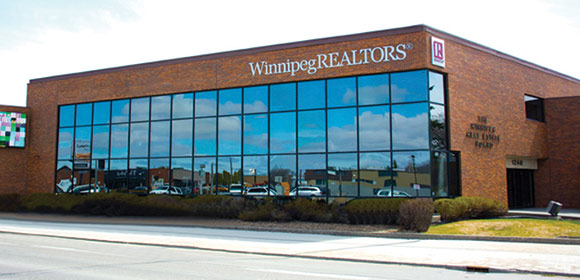by Peter Squire
As we head into the end of 2018, with December soon upon us, forecasters come out of the woodwork to project their expectations of what may unfold in the year ahead.
CMHC just released its housing market outlook for next year which they presented locally at the Manitoba Home Builders’ Association’s annual housing forum last week.
Manitoba Association of Business Economists also held their annual Outlook 2019 Day, speculating on where the provincial economy is heading with an overview of the national and local situation. This forum is always very informative and enlightening. This year, insights were provided on additional topics, with special presentations on NAFTA/USMCA, the Winnipeg IT startup scene, and the cannabis contribution to the Canadian economy. The cannabis presentation in particular was ripe with puns, as you can probably imagine. Lots of food for thought and information to digest as we gear up for 2019.
One interesting statistic, and a positive one at that, which was presented at Outlook 2019 that relates directly to housing is on household debt. As a buffer to higher interest rates going into 2019, Manitoba finance official Parameshwaran Bhahirethan noted that Manitoba households carry the least amount of non-mortgage debt in Canada ($22,776 national average versus $18,509 for Manitoba). This is important as non-mortgage debt can be the Achilles heel of enabling a home buyer to successfully pay off the good debt they have towards building equity in their home.
WinnipegREALTORS® — while keen to take in these November event presentations to help the association look at the impact of the economy and trends on its future Multiple Listing Service® (MLS®) activity — is still preoccupied with 2018 and where it may end up by year-end. WinnipegREALTORS® just sent out its October market release and was pleased to see a better result this month than it did with September’s below par performance.
As the market release stated, it was a strong start to the fourth quarter with sales up 8% over the same month in 2017, and ahead by 1% over the five-year average. There were 1,107 sales in total. A record was even set for highest dollar volume for the month of October with $330 million transacted.
It was felt at the beginning of the year that Winnipeg’s more affordable market — compared to the many other more expensive ones in Canada — would help our market better adjust to higher interest rates and more stringent mortgage qualification requirements.
And this has been true to a large extent. On a year-to-date basis, Winnipeg’s market is down 5 per cent from the same period in 2017, but while dollar volume has decreased less than 4 per cent off the record dollar volume pace set in 2017, there has still been $3.36 billion transacted on the MLS® this year as of the end of October.
Comparing the drop in Winnipeg and its outlying rural municipality sales activity to an expensive market like Metro Vancouver’s is revealing. In October, Metro Vancouver experienced a drop in residential sales of 34.9 per cent compared to October 2017. British Columbia Real Estate Association (BCREA) chief economist Cameron Muir just forecast that MLS® residential sales in the province will decline 23 per cent to 80,000 units this year, after recording 103,768 residential sales in 2017.
“The marked erosion of affordability and purchasing power caused by the mortgage stress test and rising interest rates continue to be a drag on the housing demand,” he said.
So it is rather obvious that a more affordable and resilient housing market like Winnipeg’s will fare better in 2018 than one like Vancouver’s, where prices are significantly higher. The average single family or residential-detached house price in Vancouver for October was $1,524,000. Winnipeg’s was $324,786.
With two of the slowest sales months remaining to contribute to the year-end results for the Winnipeg Metropolitan Region, there will not be a marked percentage difference in what we are seeing now with respect to sales activity and prices compared to 2017. You also have to bear in mind that 2017 was the highest dollar volume year on record at $3.92 billion. It was also a close second to the highest MLS® sales generated in 2016 of 13,632.
As for prices, the year-to-date average residential-detached price as of the end of October is $323,001 — a 2 per cent increase over the same period last year — while the condominium year-to-date average sales price of $239,349 is down less than 2 per cent from 2017.
WinnipegREALTORS® president Chris Dudeck is hopeful adjustments are occurring in our local market to finish the year off on a positive note. There is a healthy supply of listings to choose from at some very affordable prices, especially when you compare Winnipeg to other housing markets across the country.
“Looking ahead to November and the end of the year, a real positive to build on for Manitoba is the economic indicator showing U.S. exports increased 21.9% in the first eight months of 2018, first among provinces,” said Dudeck. “This is very encouraging knowing a new NAFTA/USMCA agreement has been signed to give more certainty and confidence to Manitoba businesses which are dependent on exporting their products and services south of the border.”
WinnipegREALTORS® is already starting to prepare for its major annual breakfast forecast event scheduled for February 6, 2019. The keynote speaker will be Benjamin Tal, CIBC Capital Markets deputy chief economist, who and has been very well received by REALTORS® and other guests at previous forecast events.
In the meantime, expect more reports from CMHC, banks, and real estate companies on what they think will happen next year.
There is still more to come, but compared to other markets across Canada, Winnipeg is still doing well, and WinnipegREALTORS® will keep you apprised of all the latest developments that are specific to Winnipeg’s housing market.



